"Flowers" are a creation of nature designed to attract insects for pollination. However, nature hides even more wonders within them. Many types of flowers come with medicinal properties that humans can use to prevent, alleviate, and treat various ailments, as exemplified below
1. Sesbania flower
The Sesbania flower, also known as Slid flower (scientific name: Telosma cordata (Burm. f.) Merr.), is a small greenish-yellow flower that grows in clusters of approximately 10 to 20 blooms. It possesses various medicinal properties, including the ability to support eye health, heart function, lung capacity, liver and kidney function, and blood circulation, as well as helping to regulate female hormones. Additionally, it can alleviate symptoms of dizziness and nausea, assist in treating colds, aid in phlegm expulsion, and relieve bloating and flatulence while promoting healthy bowel movements.

image from : https://medthai.com
2. The Cassia flower
The Cassia flower, scientifically known as Senna siamea (Lam.) H.S. Irwin & Barneby, is a yellow flower that blooms in branched clusters at the tips of the branches. It has various medicinal properties, including the ability to support eye health, brain function, and nerve health. It can help treat colds, asthma, blood disorders, dandruff, numbness, and insomnia. Additionally, it has been shown to inhibit the growth of cancer cells, boost the immune system, promote faster wound healing, improve appetite, and aid in expelling parasites and detoxifying the body.
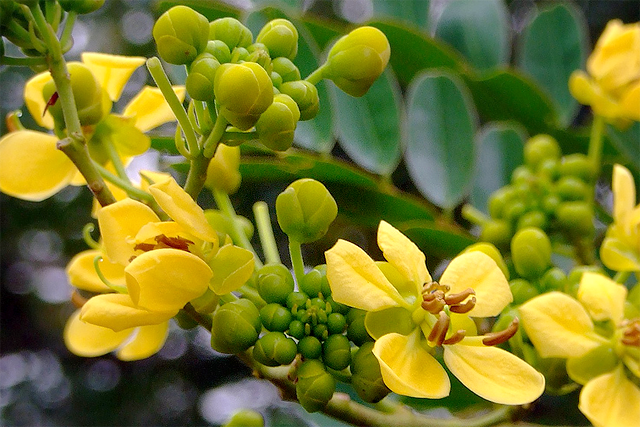
image from : http://www.kasetupdate.com/
3. Sesbania flower
The Sesbania flower (scientific name: Sesbania grandiflora (L.) Pers.) is a flower that can be white or red and resembles a bean flower. It typically blooms in clusters of 2 to 3 at the leaf axils. Its medicinal properties include supporting eye health, bone health, dental health, and liver function. It helps treat colds, bronchitis, dysentery, headaches, migraines, constipation, and symptoms of heatstroke and thirst. Additionally, it has been shown to inhibit the growth of cancer cells, boost the immune system, stimulate appetite, aid in bowel movements, and detoxify the body by alleviating fever symptoms.

image from : https://medthai.co
4. Pomegranate flower
The pomegranate flower (scientific name: Punica granatum L.) is shaped like an inverted pot, measuring about 2 to 3 centimeters, and comes in orange or red colors. It typically blooms as a solitary flower at the tips of branches. Its medicinal properties include supporting heart health, treating inner ear inflammation, and stopping bleeding by grinding the flower and applying it as a compress or using it to plug the nose during a nosebleed. Additionally, it can be used as a remedy to strengthen the intestines.

image from : https://pixabay.com
5. Lotus flower
The lotus flower (scientific name: Nelumbo nucifera Gaertn.) is a flower that can be white or pink and blooms as a solitary flower emerging from the stem that grows in water. Its medicinal properties include supporting overall health and heart function, alleviating fatigue and palpitations, and treating sexually transmitted diseases (such as syphilis), arthritis, diabetes, itching rashes, internal bruising, insomnia, and febrile illnesses. It also helps expel phlegm, stop bleeding, heal wounds, lower blood pressure, reduce cholesterol levels, and promote urination.

image from : https://medthai.com
6. Boonnaka flower
The Boonnaka flower (scientific name: Mesua ferrea L.) is one of Thailand's auspicious flowers. It has a white color with a hint of pale yellow and typically blooms as a solitary or paired flower in the leaf axils or at the tips of branches. Its medicinal properties include supporting vitality, bodily elements, blood circulation, and heart function. It helps alleviate heat, thirst, restlessness, and treats conditions such as rattan pit diseases, dizziness, lightheadedness, blurred vision, vomiting, and fevers (such as febrile illnesses and hemorrhagic fevers). Additionally, it helps expel phlegm, stop nosebleeds, heal wounds, relieve gas in the intestines, alleviate belching, and counteract snake venom.

image from : http://bangkrod.blogspot.com
7. Bougainvillea flower
The Bougainvillea flower (scientific name: Bougainvillea glabra Choisy) is a small flowering plant that typically blooms in clusters of three at the tips of its branches, with white flowers surrounded by brightly colored bracts in shades of pink, purple, red, orange, and white, commonly referred to as "flower leaves." Its medicinal properties include supporting heart health, blood circulation, and digestive system function. It helps treat irregular menstrual cycles, diarrhea, coughs, sore throats, and can also assist in lowering blood pressure.

image from : https://kaijeaw.com
8. Jasmine flower
The Jasmine flower (scientific name: Jasminum sambac (L.) Aiton) is a white flower known for its fragrant scent. It comes in both single and double petal varieties. Its medicinal properties include supporting pregnancy and heart health, treating dysentery, colds, asthma, and skin rashes. Additionally, it helps alleviate stomach pain, headaches, feelings of heat, thirst, eye pain, and earache.

image from : https://medthai.com
9. Sesbania flower
The Sesbania flower (scientific name: Sesbania javanica Miq.) is the provincial flower of Phra Nakhon Si Ayutthaya. It features five overlapping yellow petals and blooms in clusters or racemes at the leaf axils or tips of branches. Its medicinal properties include nourishing the brain and bones, inhibiting the growth and spread of cancer cells, alleviating heat toxicity, relieving fever, treating insect bites, easing stomach cramps, and helping to heal intestinal wounds.

image from : https://medthai.com
10. Butterfly Pea flower
The Butterfly Pea flower (scientific name: Clitoria ternatea L.) is a blue-purple flower (some varieties are white) shaped like a seashell with a yellow center. Its medicinal properties include nourishing the brain, eyes, and hair, stimulating blood circulation, preventing glaucoma, cataracts, cerebrovascular diseases, blood clots, and heart disease. It also helps treat bruises, relaxes muscles, inhibits the growth of cancer cells, detoxifies the body, and reduces blood sugar levels.

image from : http://www.nongmaiclub.com/blog
Bouquet of Flowers in the Shop with Healing Properties
In addition to the herbal flowers mentioned above, did you know that the flowers sold at Love You Flower also have healing properties? Let's take a look at how each flower bouquet from our shop can benefit your body!
- Roses can help relieve stress, as their scent alleviates anxiety and sadness. Additionally, the essential oil extracted from roses has properties that help reduce wrinkles and tighten the skin. The Thai rose (Morn rose) is also known for its ability to reduce fever and improve vitality, alleviating fatigue. Furthermore, making tea from rose petals can boost the immune system, create antioxidants, and serve as a mild laxative.
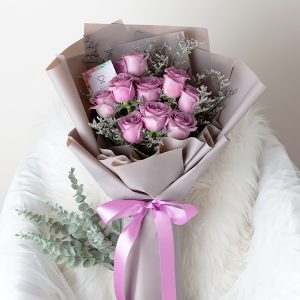 |
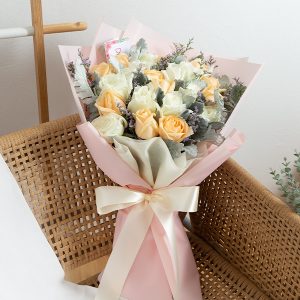 |
|---|
- Sunflowers have many surprising benefits beyond their vibrant petals and tasty seeds. They can help reduce cholesterol levels and lower blood pressure. Additionally, oil extracted from sunflowers possesses properties that treat fungal infections on the feet and prevent bacterial infections in newborns. However, for those who enjoy snacking on sunflower seeds, moderation is key; consuming too many can lead to excessive sodium intake, which may have negative effects on health.
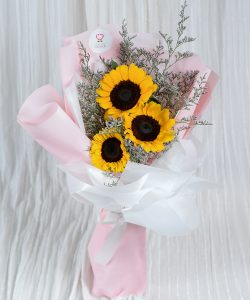 |
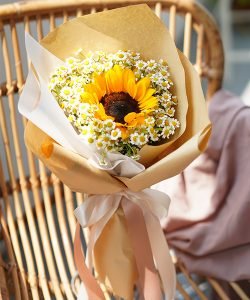 |
|---|
- Carnations are another beautiful flower with surprisingly numerous medicinal properties. They can aid in healing wounds and burns, alleviate joint and tooth pain, reduce gum inflammation, relieve cough and sore throat, and help detoxify the body. Additionally, carnations have diuretic properties.
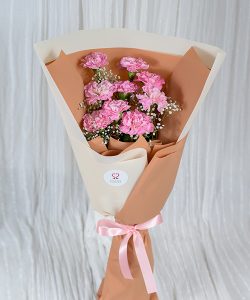 |
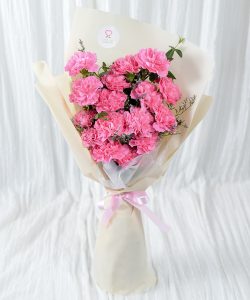 |
|---|
It can be seen that flowers not only provide beauty and evoke feelings of freshness and joy when encountered, promoting good mental health, but they also have benefits for physical health, helping to keep us strong and safe from various diseases. This can contribute to a longer lifespan for individuals in society. So, when selecting a bouquet next time, don’t just toss it aside. Besides arranging it in a vase, you can dry the flowers or extract them to create essential oils or herbal teas for health benefits.











